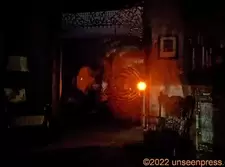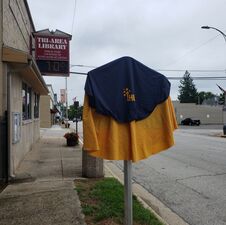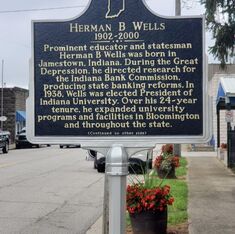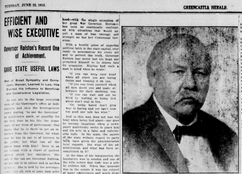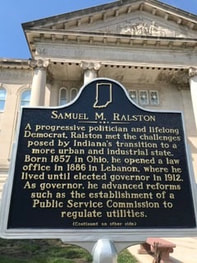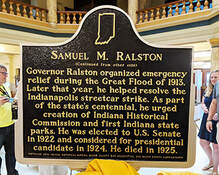|
May 11, 2024 – 2 seatings 10:00 am – 12:00 pm 2:00 pm – 4:00 pm $10.00 a person We would LOVE to see your favorite floral dress or skirt. With the Vintage jewelry! Hat, gloves and handkerchief – yes please! Of course to shawls, stoles, and ballet flats! |
|
The Indiana Quilters Trail Shop Hop 2024 was a success! Thank you to everyone that stopped by our beloved Cragun House to see the 30+ Cragun Quilt Collection that were all hand pieced, many quilted by the Booher sisters - Adelaide (Cragun), Emma, Margaret, Minnie and Martha - in the upstairs turret room. We love showing off our quilts! |
|
|
Ghost Hunts and Tours?
WE ARE SOLD OUT FOR THE APRIL 13TH EVENT! Have you been to any of the Cragun House Ghost Hunts and Tours? We are proud to have partnered with unseenpress.com, Inc. Unseenpress.com, Inc. is dedicated to bringing information about ghosts to the public. Their tours educate and entertain about Indiana's history and folklore. This developed from their deep appreciation of our Hoosier home and the history and stories told by it's residents and others from today and days past. It is their goal to promote ghost research as a source of folklore and also as a viable scientific area of study. They invite you to have a look at their ever growing site. Unseenpress.com, Inc. was created with paranormal enthusiasts in mind and strives to make the paranormal market more mainstream. These approximately quarterly events are fun and interesting with lots of Cragun House history thrown in. Visit us on Facebook or frequent unseenpress.com for upcoming events. |
|
Be a part of "So what's happening?"
Have your next small event - bridal shower, small wedding, baby shower, birthday party, or business meeting at the Cragun House! Or take a tour! Most recently tours were a part of our very successful Christmas at the Cragun House event. In mid January we hosted a wonderful group of home schooled children. |
Be a part of "What's happening" and contact us for an appointment via our message line at 765-483-9414, email at cragunhouse@mymetronet.net or by completing any of the following forms.
Contact Us Rental Agreement Tour Agreement
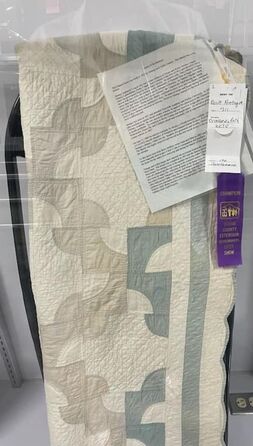
BCHS Quilt wins a Blue Ribbon at the 2023 Boone County 4-H fair!
The Boone County Historical Society is the proud owner of the Cragun Quilt Collection.
This collection of 30+ quilts was all hand pieced and quilted by the Booher sisters.
When Adelaide Booher Cragun moved into the current Cragun house (1893) at 404 West Main Street in Lebanon, the upstairs turret room became the sewing room.
Her sisters, Emma, Margaret, Minnie and Martha, often came to this room and quilted.
There were still newspaper pattern pieces and cotton fabric pieces in the room,
ready for quilting, when BCHS received the home.
This particular quilt, Drunkard’s Path, is a difficult pattern to piece and quilt due to the curved path. This quilt was done in the colors of the Women’s Christian Temperance Union, blue and white. These quilts were completed by women to show support for the cause and were often auctioned to raise funds. In the words of the 4-H judge, “ Quilt is in remarkable condition, although there is a lot of fading. The circular stitching is well done. Quilting stitches are even and very well done. The scalloped edge is complementary and well exacted. I wish the teal fabric had not faded, but this quilt has been well maintained.”
The quilt features the path in blue and grey. The three borders are white and blue with the outer border being white with a scalloped edge. The outer binding is blue. Even with fading, the exquisiteness of this hand pieced quilt, over a hundred years old, is evident. Amazingly it lives in the exact location where it was made, and stitched by the owner of the home. It is special indeed, well deserving of the champion ribbon in the
antique quilt division at the Boone County Extension Homemakers’ Open Show, 2023
Make an appointment today to view the incredible collection of antique quilts housed at the Cragun House.
Call the message line at 765-483-9414 or email: cragunhouse@mymetronet.net
The Boone County Historical Society is the proud owner of the Cragun Quilt Collection.
This collection of 30+ quilts was all hand pieced and quilted by the Booher sisters.
When Adelaide Booher Cragun moved into the current Cragun house (1893) at 404 West Main Street in Lebanon, the upstairs turret room became the sewing room.
Her sisters, Emma, Margaret, Minnie and Martha, often came to this room and quilted.
There were still newspaper pattern pieces and cotton fabric pieces in the room,
ready for quilting, when BCHS received the home.
This particular quilt, Drunkard’s Path, is a difficult pattern to piece and quilt due to the curved path. This quilt was done in the colors of the Women’s Christian Temperance Union, blue and white. These quilts were completed by women to show support for the cause and were often auctioned to raise funds. In the words of the 4-H judge, “ Quilt is in remarkable condition, although there is a lot of fading. The circular stitching is well done. Quilting stitches are even and very well done. The scalloped edge is complementary and well exacted. I wish the teal fabric had not faded, but this quilt has been well maintained.”
The quilt features the path in blue and grey. The three borders are white and blue with the outer border being white with a scalloped edge. The outer binding is blue. Even with fading, the exquisiteness of this hand pieced quilt, over a hundred years old, is evident. Amazingly it lives in the exact location where it was made, and stitched by the owner of the home. It is special indeed, well deserving of the champion ribbon in the
antique quilt division at the Boone County Extension Homemakers’ Open Show, 2023
Make an appointment today to view the incredible collection of antique quilts housed at the Cragun House.
Call the message line at 765-483-9414 or email: cragunhouse@mymetronet.net
Boone County Historical Markers
|
Herman B. Wells Historical Marker dedicated August 1, 2020
Thanks to the combined efforts of the Boone County Historical Society; Eric Spall, Boone County Historian; and the many community supporters of the project; Boone County native Herman B. Wells was honored on Saturday, August 1, 2020 with the dedication of an Indiana Historical Bureau State marker. The state historical marker can be found on West Main Street, Jamestown, IN. The dedication ceremony began with opening remarks from Eric Spall about Wells’ connection to Boone County. Casey Pfeiffer, manager of the state historical marker program at the Indiana Historical Bureau, talked about the state marker program and then Justin Clark also of IHB, spoke of Wells historical significance. After the unveiling, the Jackson Township Historical Society invited those present into their museum for an open house. |
|
Herman B. Wells was born in Jamestown, IN and was the only son of Joseph Granville Wells.
Wells died at the age of 98 and is buried in his boyhood home of Jamestown. He started his career in banking. In the 1930s he oversaw research into the state of Indiana's banks that was used to enact banking reforms during the Great Depression. Wells is probably most well known for his tenure as president of Indiana University (1938-1962). He is generally credited with having transformed IU from a small state school into an internationally renowned university. He oversaw many building projects on the Bloomington campus, and was influential in setting the tone for the campus's appearance and atmosphere. He also worked hard to spread IU regional campuses around Indiana. Wells was a strong advocate for academic freedom, making sure that professors at IU could pursue their research free from interference from public opinion. He remained steadfast in his support of IU’s faculty and students, especially in the areas of academic freedom and civil rights. |
Gov. Samuel M. Ralston Historical Marker Installed August 2020
Although several years in the making, we are proud to announce the installation of the Gov. Samuel M. Ralston state historical marker. The required work towards gaining the marker in honor of Gov. Ralston began in 2017, one of the first projects of Boone County historian, Eric Spall. The marker was funded by the Boone County Bar Association (of which Ralston was a charter member). Installation on the south side of the courthouse lawn was approved by the County Commissioners and was to be put up in 2018, but the courthouse square renovation project and the construction of the new courthouse entrance ramp delayed installation until August, 2020. The marker was dedicated at a small public ceremony in July 2019.
Samuel Moffett Ralston was born in Ohio in 1857 and moved to Indiana at an early age. He graduated in law from Central Normal College in Danville, IN and became a lawyer. He opened a law office in Lebanon, IN in 1886 and became active in the Democratic Party at that time. He served a term as Lebanon’s
school board president, the only elected position he held until he was elected Indiana governor in 1912. He occupied the office of governor from 1913-1917.
In 1913, he oversaw Indiana's emergency response to the Great Flood of 1913. That same year he intervened in the tense Indianapolis Streetcar Strike, bringing about a peaceful settlement. In the leadup to Indiana's centennial celebration in 1916, Ralston helped organize the Indiana State Historical Commission (now the State Historical Bureau), which coordinated the state's centennial commemoration.
One of the most enduring legacies of this effort was the creation of Indiana's state park system.
In 1922, he was elected US senator from Indiana. 1924 brought strong support at the Democratic National Convention for the nomination for US President.
He later; however, withdrew from the race citing his declining health. He died a year after on October 14, 1925 and is buried in Lebanon's Oak Hill Cemetery.
Although several years in the making, we are proud to announce the installation of the Gov. Samuel M. Ralston state historical marker. The required work towards gaining the marker in honor of Gov. Ralston began in 2017, one of the first projects of Boone County historian, Eric Spall. The marker was funded by the Boone County Bar Association (of which Ralston was a charter member). Installation on the south side of the courthouse lawn was approved by the County Commissioners and was to be put up in 2018, but the courthouse square renovation project and the construction of the new courthouse entrance ramp delayed installation until August, 2020. The marker was dedicated at a small public ceremony in July 2019.
Samuel Moffett Ralston was born in Ohio in 1857 and moved to Indiana at an early age. He graduated in law from Central Normal College in Danville, IN and became a lawyer. He opened a law office in Lebanon, IN in 1886 and became active in the Democratic Party at that time. He served a term as Lebanon’s
school board president, the only elected position he held until he was elected Indiana governor in 1912. He occupied the office of governor from 1913-1917.
In 1913, he oversaw Indiana's emergency response to the Great Flood of 1913. That same year he intervened in the tense Indianapolis Streetcar Strike, bringing about a peaceful settlement. In the leadup to Indiana's centennial celebration in 1916, Ralston helped organize the Indiana State Historical Commission (now the State Historical Bureau), which coordinated the state's centennial commemoration.
One of the most enduring legacies of this effort was the creation of Indiana's state park system.
In 1922, he was elected US senator from Indiana. 1924 brought strong support at the Democratic National Convention for the nomination for US President.
He later; however, withdrew from the race citing his declining health. He died a year after on October 14, 1925 and is buried in Lebanon's Oak Hill Cemetery.



